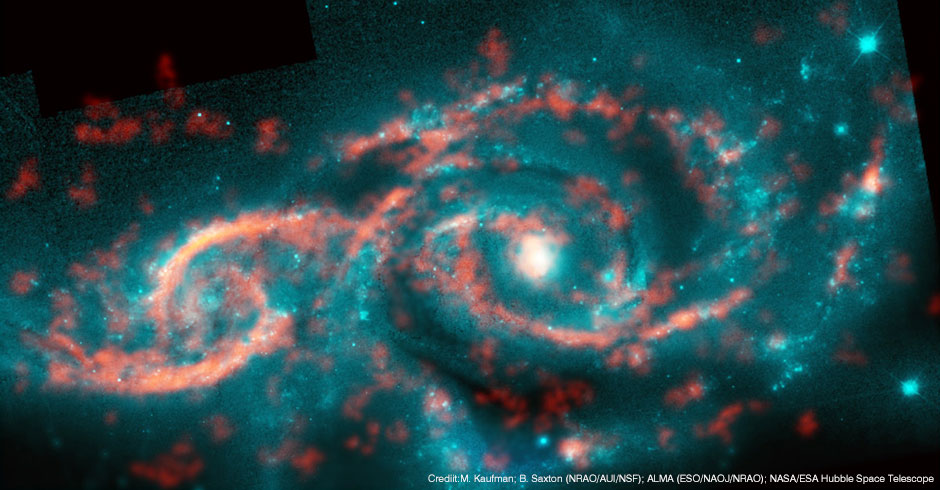Eye Ball Appeared when Galaxies Passed Each Other
Astrophotography・

This is a photo of a pair of galaxies, IC 2163 (left) and NGC 2207 (right), trying to pass each other without colliding. It was taken by ALMA (orange) and the Hubble Space Telescope (blue). When ALMA captured the detailed distribution of gas, which provides the material for stars, a shape reminiscent of an eyeball appeared in IC 2163.
Galaxies Influenced by Gravity
It is thought that many galaxies in the Universe grew by colliding with each other. IC 2163 and NGC 2207, seen here, will eventually coalesce into one galaxy. In the image observed this time, the galaxies’ spiral shapes didn’t seem to be greatly distorted, but in reality, they have been affected by each other’s gravity. Analyzing the radio waves observed by ALMA in detail could clarify the movement of gas flowing into IC 2163. This image conveys how the gas moves when galaxies collide and how it leads to large-scale star formation activity in the future. These are important pieces of information for forecasting the future of the galaxies.
Text by: Masaaki Hiramatsu (NAOJ Chile Observatory)
Translation by: Hiroko Tsuzuki and Ramsey Lundock (Public Relations Center, NAOJ)
Image Data
| Object | IC 2163/NGC 2207 |
|---|---|
| Telescope | ALMA and Hubble Space Telescope |
| Instrument | ALMA Band 3 receivers and Hubble Space Telescope Wide Field and Planetary Camera 2 |
| Wavelength | 2.6 millimeters (ALMA) and 439 nanometers (Hubble Space Telescope) |
| Exposure | 38 minutes (ALMA) and 500 seconds (Hubble Space Telescope) |
| Date | April 3, 2014 (ALMA) |
| Credit | M. Kaufman; B. Saxton (NRAO/AUI/NSF); ALMA (ESO/NAOJ/NRAO); NASA/ESA Hubble Space Telescope |